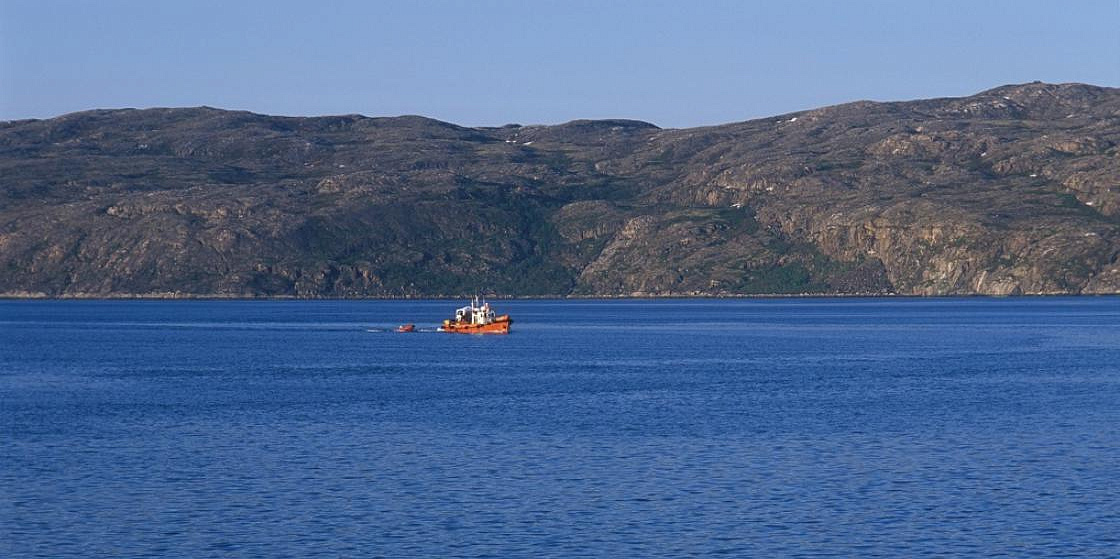
Photo: Shtrick Vadim/GeoPhoto.ru
Monitoring Systems to Address the Impact of Thawing Permafrost
Thawing permafrost is a major issue facing the Arctic. According to estimates by the Siberian Branch of the Russian Academy of Sciences, by 2050, the sum of damages caused by permafrost degradation may reach up to 5 to 7 trillion rubles (USD 69 to 96 billion), including losses averaging about 0.8 trillion rubles (USD 11 billion) potentially caused to residential houses. Such estimates were made public by Maxim Zhelezniak, Director of the RAS Geocryology Institute, at the 3rd Northern Forum held in Yakutsk.
The scale of the problem appears to be even more staggering in light of what we know about the cost of all buildings constructed on permafrost in the Russian Arctic: it is estimated at around 9.6 trillion rubles, of which the reported value of residential units amounts to 1.1 trillion rubles (USD 132 and 15 billion respectively). Thus, according to Mr. Zhelezniak, about ¾ of all Russia’s infrastructure in the Arctic are under threat. The problem is further aggravated by the fact that in Russia’s permafrost areas more than 40% of all infrastructure are deformed due to thawing permafrost.
In addition, thawing permafrost is known to affect agriculture. As Aysen Nikolaev, the Head of the Sakha (Yakut) Republic, stated, the cultivated land area shrunk from 107,000 hectares in 1990 to merely 46,000 hectares in 2016 due to permafrost degradation -- a major threat to food security in this remote region and to its supply chains.
Steps are being taken to find viable solutions to these challenges. If we cannot change the climate, we can at least come up with tools helping us better understand how fast permafrost will degrade and what areas and in which way this process will affect. According to Mr. Nikolaev, an integrated permafrost monitoring system will be deployed in the Yakut Republic by 2023, with a special emphasis put on monitoring the thawing of permafrost in the region’s southern areas. Some of such tools are already available. For instance, in early September, the Siberian Branch of the Russian Academy of Sciences presented a permafrost map of Yakutia providing information on permafrost temperatures, seasonal thaw depth, cryogenic processes, and other valuable data.
The scale of the problem appears to be even more staggering in light of what we know about the cost of all buildings constructed on permafrost in the Russian Arctic: it is estimated at around 9.6 trillion rubles, of which the reported value of residential units amounts to 1.1 trillion rubles (USD 132 and 15 billion respectively). Thus, according to Mr. Zhelezniak, about ¾ of all Russia’s infrastructure in the Arctic are under threat. The problem is further aggravated by the fact that in Russia’s permafrost areas more than 40% of all infrastructure are deformed due to thawing permafrost.
In addition, thawing permafrost is known to affect agriculture. As Aysen Nikolaev, the Head of the Sakha (Yakut) Republic, stated, the cultivated land area shrunk from 107,000 hectares in 1990 to merely 46,000 hectares in 2016 due to permafrost degradation -- a major threat to food security in this remote region and to its supply chains.
Steps are being taken to find viable solutions to these challenges. If we cannot change the climate, we can at least come up with tools helping us better understand how fast permafrost will degrade and what areas and in which way this process will affect. According to Mr. Nikolaev, an integrated permafrost monitoring system will be deployed in the Yakut Republic by 2023, with a special emphasis put on monitoring the thawing of permafrost in the region’s southern areas. Some of such tools are already available. For instance, in early September, the Siberian Branch of the Russian Academy of Sciences presented a permafrost map of Yakutia providing information on permafrost temperatures, seasonal thaw depth, cryogenic processes, and other valuable data.
29 September 2021




